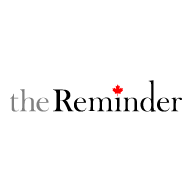The Reminder is making its archives back to 2003 available on our website. Please note that, due to technical limitations, archive articles are presented without the usual formatting.
It's been worn by many players over the course of the years Ð some famous through the NHL, others famous as their family and friends watch them at the Whitney Forum. Donning jersey number 11, Bobby Clarke helped get the Flin Flon Bombers named as one of the Greatest Jerseys of All Time. Published by The Hockey News recently, the Bombers were named in the Icons on Ice section. The Bombers' jersey from the 1968-69 season as chosen for the collection along with jerseys such as the Montreal Canadiens, Toronto Maple Leafs, Boston Bruins and the Chicago Blackhawks. "Led by local boy and league scoring champion Bobby Clarke, Flin Flon won the WCHL championship in 1968-69," read the article. "Clarke, who scored 137 points that year, was passed over by many NHL teams at the -'69 draft because of his diabetes. "The Flyers," the article continued, "took him 17th overall and he went on to score more points in the NHL than any player in that draft. His number 11 Bombers sweater was retired by the team." The Bombers also joined the Buffalo Bisons, Soviet Union, Canada Cup, Cleveland Falcons, Whitby Dunlops, Victoria Cougars, Ottawa Senators, NHL All-Stars, Rochester Americans, Trail Smoke Eaters, Toronto Maple Leafs, Chicago Blackhawks, BBTE, Team Canada, Minor Pro ranks, Philadelphia Quakers, Amateur Hockey, Edmonton Oilers, Montreal Canadiens, Team USA and Minor Pro in the Icons on Ice portion of the collection. As well as making a list of the greatest jerseys to grace the ice service, the collection also comments on the selection of numbers Ð and reasons behind specific digits. Number one was reserved for the goalie Ð as they were the first player on the ice. "...signifying how a team starts with its goalie and builds out and how the goalie has to play the position alone, winning or losing the game single-handedly," read one of the articles. It was noted legends such as George Veznia, Terry Sawchuk and Jaques Plante wore the number one. As well, the article went on to mention number two Ð a number that was generally used as a defensive number. "...symbolizing the next player out from the goaltender," read the article. "Two legends who made the the number famous were Eddie Shore and Doug Harvey." Also on the list for NHL numerology was four Ð Bobby Orr's number. "Considering the careers of Jean Beliveau and Red Kelly, this number was on the path to being a center-only club, but since Orr revolutionized the game, his number four has become a badge of honour for defensemen," read the article. See 'Number' on pg. Continued from pg. The number nine was reserved for the "elite" players Ð such as Bobby Hull and Rocket Richard. "It signifies greatness Ð the top scorer, first-line center and sometimes the captain," it stated. It goes without stating, says the article, that the number earned its great title because of those players who donned it on their backs. Flin Flon's own Clarke earned the status for number 16 while he played in the NHL Ð as it has been known as the "attitude" number. See 'Original' on pg. Continued from pg. "...Clarke made it what it is, but other legends include the fiercely outspoken Brett Hull." The Original Six were noted in the greatest jerseys collection Ð the Boston Bruins, Chicago Blackhawks, Detroit Red Wings, Montreal Canadiens, New York Rangers and the Toronto Maple Leafs. "Hockey has the best uniforms in professional sports, bar none," read a blurb from one of the articles. "The logos, colours and designs, are cool, hip and happening." The great debate over sweaters vs jerseys continues after all these years. "They're sweaters, darn it, not jerseys," read another blurb. "True, they're not made from wool anymore, but if we're going to get technical, shouldn't we call them 'synthetics?'" As well as the Original Six and the Icons on Ice, the collection also featured a few international jerseys, or sweaters, if you prefer. Japan made their splash into the pool as they entered a team in the 1960 Winter Olympics. With the option of three different alphabets to choose from and over 70,000 characters, the Japanese decided to keep things simple with a white jersey with red stripes and their flag Ð with Japan spelled over top. As well as Japan, Spain, Australia, Romania and the Grinigen club made it onto the list. As jerseys, or sweaters, logos grew with the times, so did the way they were made. Fight straps were added in the 1970s but later redesigned and made a part of the everyday uniform in the '80s. But it wasn't until the '90s when the strap was mandated. As well how the designs have improved, the collection also offers the 10 most critiqued jerseys Ð as per The Hockey News' Jeff Barak. Number 10 Ð 2003-04 Atlanta Thrashers alternate jersey Number nine Ð Montreal Canadiens 1912-13 centennial jersey (February 1, 2009) Number eight Ð Buffalo Sabers redesign in 2006-07 Number seven Ð Nashville Predators alternate jersey in 2001-02 Number six Ð New York Islanders 1996-97 'fish sticks' jersey Number five Ð Los Angeles Kings' gradient jersey in 1995-96 Number four Ð Phoenix Coyotes' Midnight in the Desert jersey Number three Ð Vancouver Canucks had had a number of jerseys including their blue and green colours in 1970, but the most critiqued were their 1978 jersey Ð the 'Flying V' Number two Ð Dallas Stars alternate jersey in 2003-04 as the team added a new colour never used by them before Ð red. And the number one critiqued jersey has been the Anaheim Mighty Ducks' alternate jersey in 1995-96. The 'Wild Wing' jersey had a life span of six games before being shelved. It was noted that some players even refused pictures while wearing the jersey.



